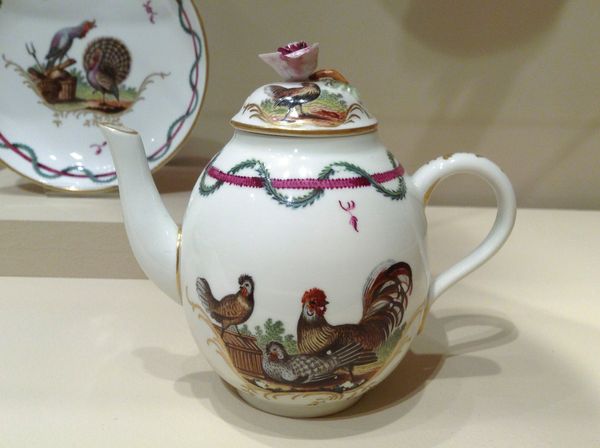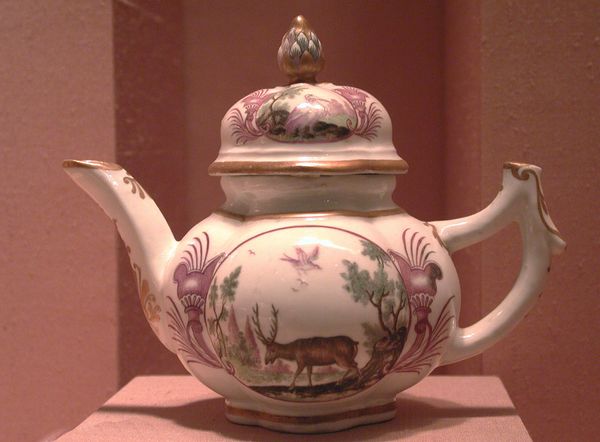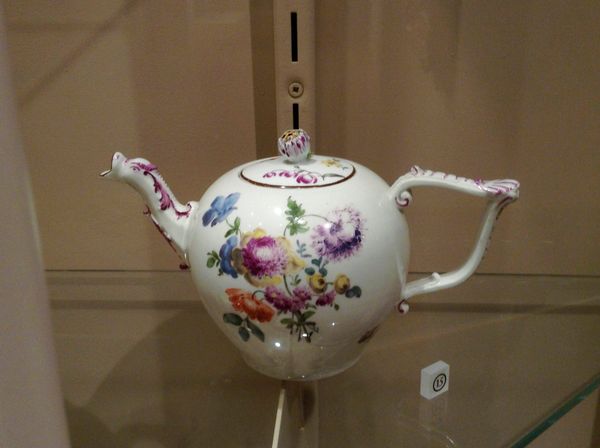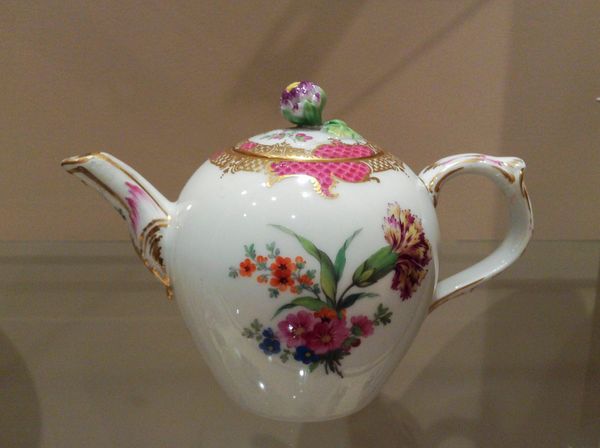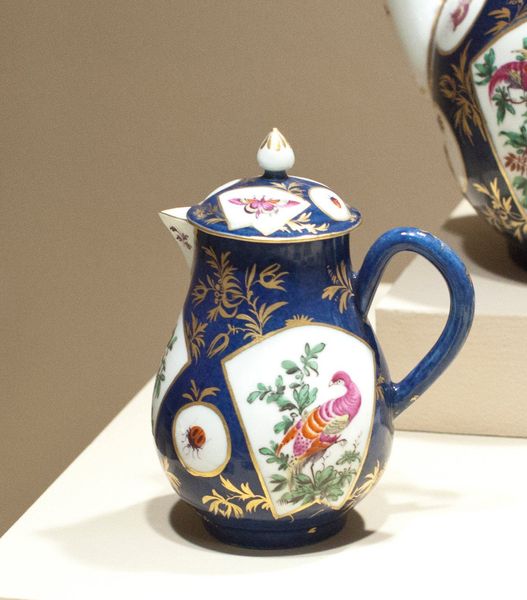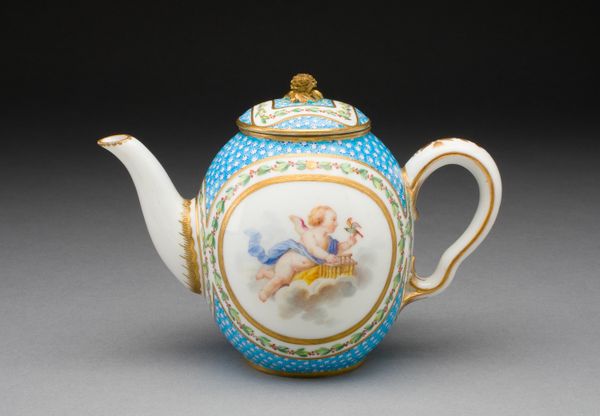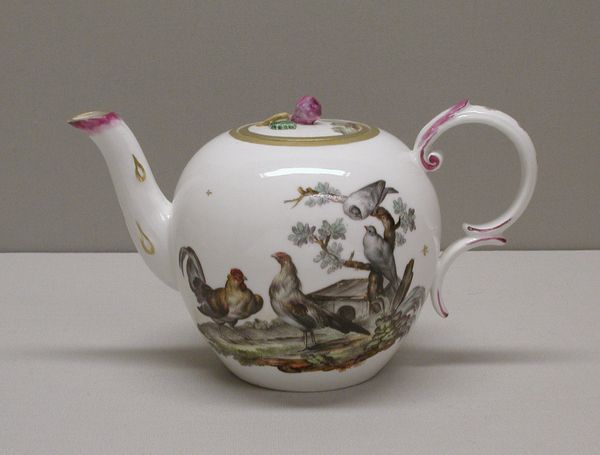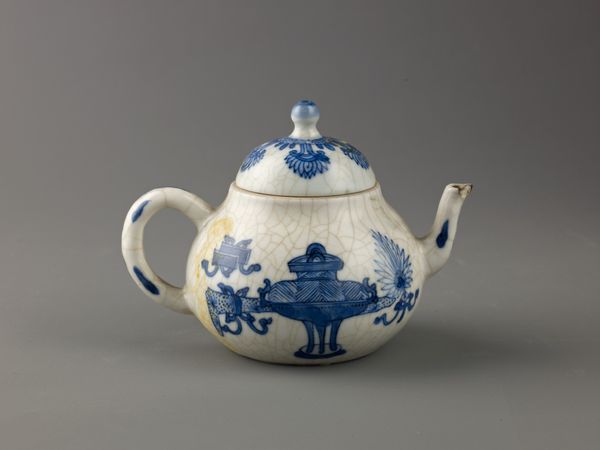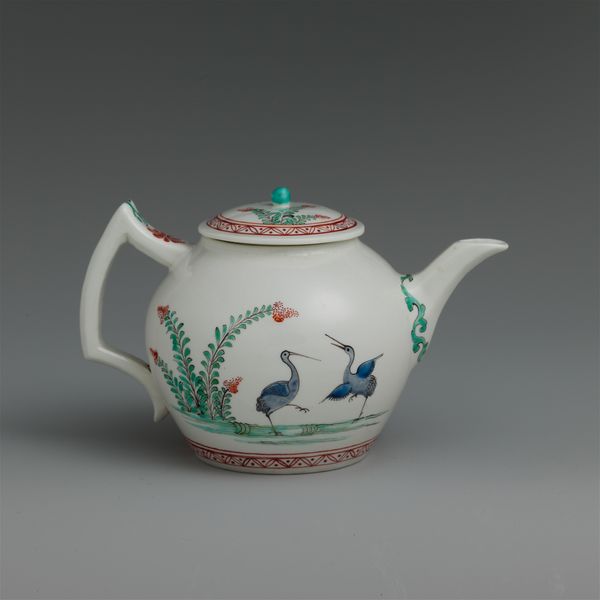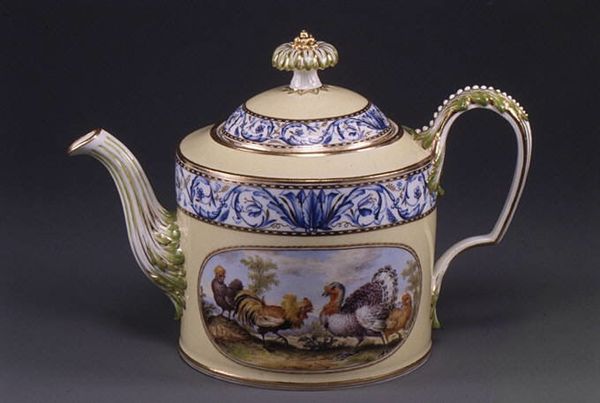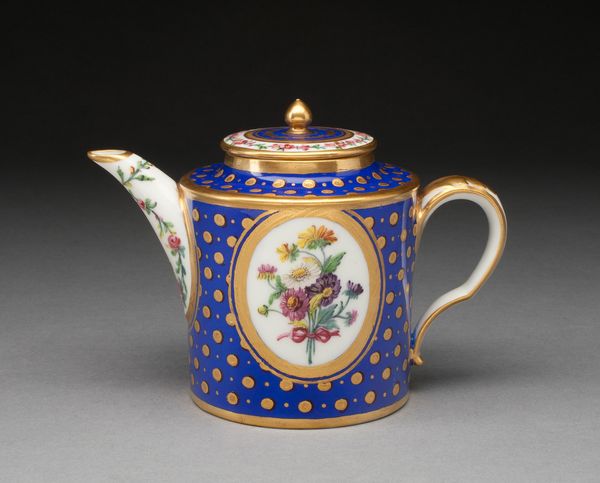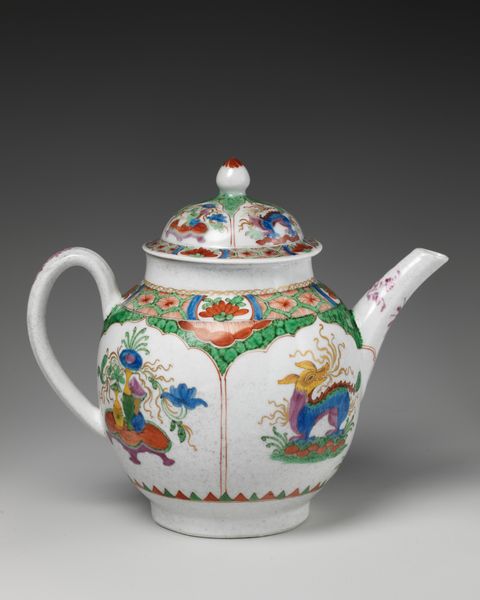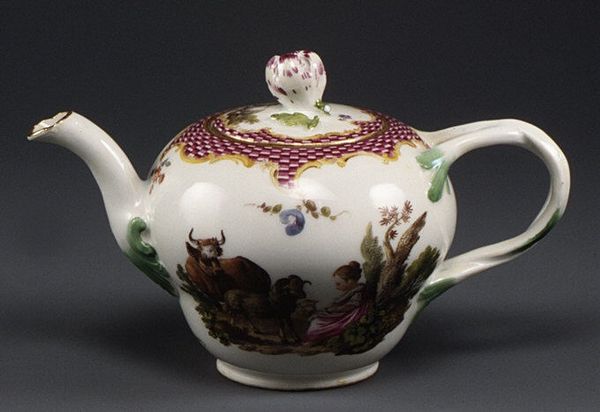
Teapot c. 1765
0:00
0:00
ceramic
#
asian-art
#
ceramic
#
figuration
#
england
#
watercolour illustration
#
decorative-art
#
rococo
Dimensions: 6 1/2 x 6 5/8 x 3 5/8 in. (16.51 x 16.83 x 9.21 cm)
Copyright: Public Domain
Editor: This lovely ceramic teapot, made by the Worcester Porcelain Works around 1765, features these beautiful, delicate illustrations of figures. There’s something so refined about the piece. What can you tell me about it? Curator: It's fascinating to consider this "Teapot" as an artifact of cultural exchange and colonial dynamics. The Chinoiserie style, so popular in Europe at the time, reveals a romanticized, often inaccurate, vision of Asian culture, crafted for European consumption. But it is also a document of appropriation. Editor: Appropriation? In what sense? Curator: The East India Company was expanding its reach. Consider how goods, images, and ideas were extracted from Asian contexts and re-presented for a European market. Who had the power in that transaction? What were the implications of shaping narratives about other cultures without understanding their nuances? Editor: I see. So the appeal of this teapot wasn’t just aesthetic, but also tied to a broader power structure. It speaks to a desire to possess and control a narrative, too. The exotic allure… Curator: Precisely. And that allure fueled an economic engine. The figures depicted also take on new significance. Are they depicted accurately, respectfully? Or are they simply decorative elements serving a European fantasy? And even the act of drinking tea, itself, becomes intertwined with global trade and colonialism. What did "exoticism" mean, and who benefited? Editor: It is fascinating to think about what appears decorative is a mirror reflecting power structures and the gaze of colonialism. I'll definitely see this piece differently from now on!
Comments
minneapolisinstituteofart almost 2 years ago
⋮
During the 18th century, English ceramic factories imitated Chinese ceramics in an effort to compete with the lucrative porcelain market. This teapot, inspired by a Chinese model, is decorated with Chinese-style court ladies.
Join the conversation
Join millions of artists and users on Artera today and experience the ultimate creative platform.

